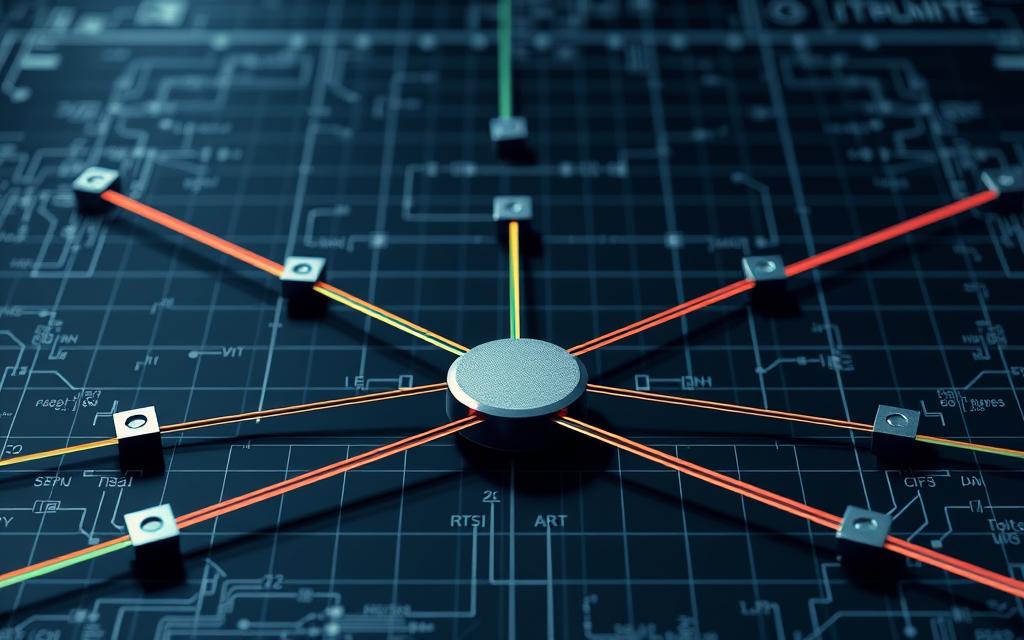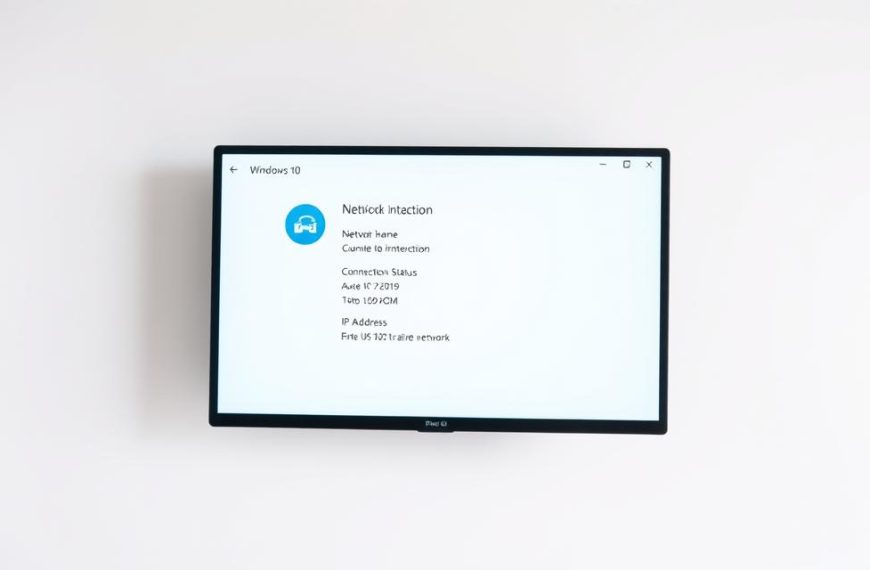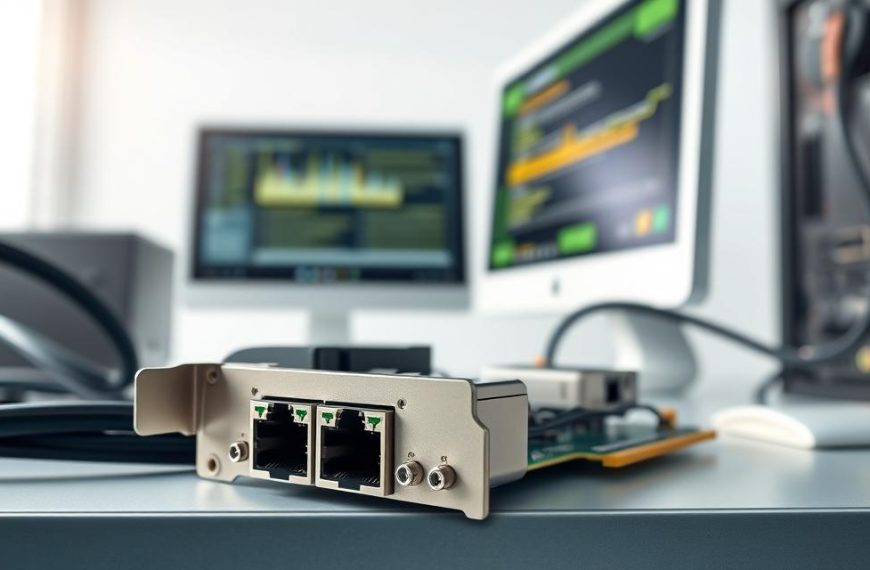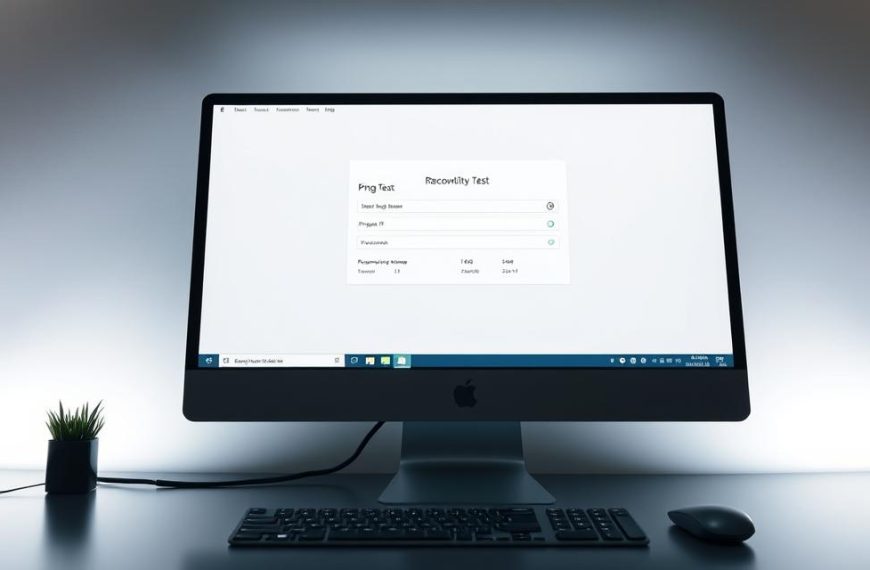Circuit switching is a key networking method. It makes a permanent link between two devices. This creates a dedicated communication path before any data is sent.
The whole bandwidth is kept for that single connection. This means data flows smoothly once the path is set up.
Network resources are fully used for the conversation. This ensures constant and predictable performance. It’s the basis of old telephone systems and early digital communications.
Knowing about circuit switching helps us understand modern computer networks. It shows the basic ideas that shape today’s networks.
What is Circuit Switching in Computer Network
Circuit switching is a key networking method. It keeps communication channels open for specific connections from start to finish. This ensures data flows without breaks until the connection ends.
Core Concept of Dedicated Paths
The heart of circuit switching is its connection-oriented design. Before data starts moving, a full physical path is set up between devices. This path is only for that connection, not shared with others until it’s closed.
Setting up this path means configuring switches and routers. This creates a continuous path for communication. The network bandwidth is fixed, giving consistent performance. This is different from methods where resources change.
Phone networks are a classic example. When you call, a special circuit is made between your phone and the other’s. This circuit stays open until you hang up, even if you’re not talking.
| Characteristic | Circuit Switching | Traditional Implementation |
|---|---|---|
| Path Type | Dedicated physical path | Copper wire circuits |
| Bandwidth Allocation | Fixed and guaranteed | 64 kbps (voice channel) |
| Connection Setup | Required before data transfer | Dial tone and number dialling |
| Resource Efficiency | Lower during silent periods | Channel idle when not speaking |
Historical Context and Evolution
Circuit switching started with early telephones in the late 1800s. Manual switchboards connected calls by cables. This evolved into automated systems in the early 1900s.
The 1930s saw crossbar switches, making connections faster and more reliable. These systems used electromagnetic relays for connections. For many years, they were key in global telecom.
In the 1960s, digital circuit switching came with electronic systems. This improved speed and reduced space needs. Time-division multiplexing let many conversations share a medium, but each had its own path.
Even though newer tech has taken over, circuit switching’s ideas are in today’s telecom. It’s about guaranteed bandwidth and dedicated channels for consistent quality.
How Circuit Switching Establishes Connections
Circuit switching sets up dedicated channels between devices. This method keeps a path open for the whole communication session. It’s different from other networking methods.
Three Phases: Establishment, Transfer, and Teardown
The circuit switching process has three main stages. Each stage has a key role in managing network resources and communication flow.
Circuit Establishment Phase
This first stage creates a direct path between devices. The calling device sends a request that goes through switches, reserving bandwidth. This circuit establishment ensures resources are ready before data starts moving.
Data Transfer Phase
After the circuit is set up, data starts flowing. It moves without breaks or delays. This data transfer keeps performance steady during the session.
Teardown Phase
When it’s time to stop, either device can start the end process. This teardown phase frees up resources for others. The system sends signals to dismantle the circuit.
Signalling and Resource Allocation
Signalling protocols manage the whole connection life in circuit-switched networks. They handle requests, resource booking, and end commands.
Resource booking happens at the start. Network elements:
- Find the best path through the network
- Save bandwidth on each part
- Set up switches at middle points
- Check if the connection is ready for devices
This system ensures good service but can waste resources when circuits are unused. The signalling keeps the network in sync, keeping each connection strong from start to end.
For more on how these networks work, check out computer network circuit switching. It has all the technical details.
Advantages of Using Circuit Switching
Circuit switching has its own strengths, even with newer tech around. Its way of setting up connections is valuable in today’s world.
Guaranteed Bandwidth and Low Latency
Circuit switching gives a guaranteed data rate for the whole session. This means consistent speeds without drops.
It’s great for things that need to happen in real time. Voice calls and video chats are much better with it.
There’s little to no delay in data with circuit switching. This low latency is perfect for urgent messages.
Quality of service (QoS) is built into circuit-switched networks. The dedicated path means performance stays the same all the way.
Enhanced Security and Reliability
Circuit switching is more secure than shared networks. The private link between users cuts down on risks of being intercepted.
It’s highly reliable because of its dedicated channel. Losing or messing up data is very rare.
This makes circuit switching great for important stuff. Emergency services and banks use it for critical tasks.
Even though it’s not for every situation, circuit switching’s benefits are clear. It’s a top choice for certain needs.
Disadvantages and Limitations
Circuit switching has its benefits but also big drawbacks. These issues are clear when we look at how it uses resources and grows with the network.
Inefficiency in Resource Utilisation
Circuit switching’s design leads to big problems with bandwidth. A path is set up and stays there, even when no data is moving.
This means a lot of wasted resources when there’s no activity. Think of a voice call where one person is always listening. The bandwidth is used but not fully.
This fixed setup is called “inefficient bandwidth use” by experts. Unlike other tech, circuit switching can’t share unused bandwidth. This makes the whole network less efficient.
“Circuit switching’s rigid resource allocation represents a fundamental constraint in environments where bandwidth optimisation is key.”
This issue gets worse in networks with changing traffic. Circuit switching can’t adjust well to these changes.
Scalability Issues in Modern Networks
Dedicated paths cause big limited scalability problems. Each connection needs its own path, leading to physical and logistical issues as networks grow.
For networks with thousands or millions of users, circuit switching is not practical. It’s too expensive for big networks or high-density connections.
Scalability issues are clear when looking at how many connections a network can handle:
| Network Size | Circuit Switching Capacity | Practical Limitations | Cost Implications |
|---|---|---|---|
| Small office (10 users) | Adequate | Minimal | Reasonable |
| Medium enterprise (100 users) | Challenging | Physical space requirements | Significant investment |
| Large service provider (10,000+ users) | Impractical | Infrastructure impossible | Prohibitively expensive |
This table shows circuit switching’s limits as networks get bigger. It clashes with today’s need for flexible, scalable networks.
Setting up each connection takes little time for one circuit. But for thousands, it adds up, making scalability even harder.
Because of these issues, circuit switching is mostly used for old systems. New networks mostly use packet-based tech for internet and data.
Circuit Switching vs Packet Switching
Both technologies help send data over networks, but they work in different ways. Knowing how they differ helps network experts choose the best option for each task.
Key Differences in Data Handling
Circuit switching sets up a dedicated physical path before data starts moving. This means it’s always ready for the data, ensuring it works well.
Packet switching breaks data into packets that travel on their own. This way, many messages can use the network at the same time. Each packet might take a different route to its destination.
Another big difference is how they use resources. Circuit switching uses bandwidth all the time, even if it’s not needed. Packet switching only uses resources when it’s actually sending data. This makes packet switching better for unpredictable data flows.
Use Cases: When Each Technology Excels
Circuit switching is great for real-time communications that need to be perfect. For example, phone calls need to be clear and uninterrupted.
Packet switching is better for modern data needs. It’s perfect for things like browsing the internet, sending emails, and streaming videos. It’s flexible and efficient for many different uses.
Some systems use a mix of both, called virtual circuits. This combines the best of both worlds. It’s used in Frame Relay and ATM networks.
For a detailed look at how these technologies compare, check out this guide on switching technologies. It goes into the details of how they work and their performance.
Conclusion
Circuit switching laid the groundwork for reliable voice calls in old telecommunication systems. It made sure landline networks worked well for many years.
Now, packet switching is the key to modern networks. It’s great for the internet because it can grow and change easily. Both methods have their own strengths and weaknesses.
This summary shows why it’s key to know about network changes. Old circuit-based systems were steady and safe. New packet-based systems are flexible and efficient.
Knowing about both is vital for network experts. Each technology is best for different tasks. They help make our world more connected.













